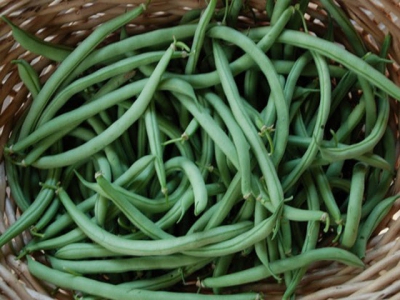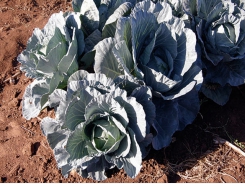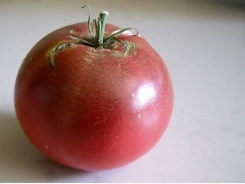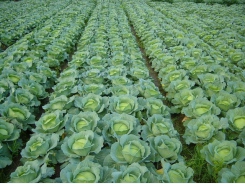Growing Beans in the Home Garden

Beans, which belong to the legume family, are some of the most popular vegetables grown in the home garden. In fact, beans are right behind tomatoes in popularity. There are many varieties, so you can probably find one to suit your taste.
Green beans (also called snap beans), the kind most often found in home gardens, have many essential vitamins and minerals including calcium, potassium, vitamin A, folate, vitamin K and, of course, fiber. It is interesting to note that green beans also come in yellow and purple varieties! Growing snap beans is fairly easy to do and once you get the hang of it you can be harvesting and enjoying delicious beans year after year.
TYPES OF BEANS – BUSH BEANS AND POLE BEANS
There are two general types of beans that are grown in the home garden: bush beans and pole beans. They really don’t differ all that much, other than their growth habit.
BUSH BEANS
Bush beans, true to their name, grow on a bushy plant close to the ground. These kinds of beans do not need to be staked or trellised, and are a little easier to grow than pole beans because of this. Harvesting is more labor-intensive, however, and the bean plants are less tidy and dirtier. Bush beans are the most popular type of bean for the home garden.
POLE BEANS
Pole beans, in contrast, are a “vine” type of plant with tendrils and will need to grow on a structure such as a trellis, pole or fence. Pole beans grow upward and are a bit easier to harvest, cleaner and can take up less linear space. Pole beans usually produce pods over a longer period of time than bush beans.
Both bush and pole beans are tasty and produce a large crop that can last for weeks.
Some common types of bush beans varieties are Blue Lake 274, Festiva, Greencrop, and Kentucky Wonder. Depending on the variety, beans generally take between 55-65 days to mature. If you plant beans every couple of weeks until mid-July you will ensure a large and continuous crop throughout the season.
Once you have decided what bean you want to grow (or you could plant both!), follow these guidelines to ensure a healthy crop.
GROWING CONDITIONS FOR GREEN BEANS
Green beans require full sun (at least 6 hours a day) organically rich and well-drained soil. Beans do not do well in cool, wet soil and will produce poorly if planted in these conditions. They prefer a soil pH of 6.5-7.5 Fertilization is not a necessity if the soil is organically rich.
PLANTING BEANS
Beans are a warm season vegetable and will need to be planted after all signs of frost are past and the soil is warm. Green beans are planted from seed. When you buy bean seeds from the garden center or nursery, store them in a cool, dry place and plant them as soon as possible after purchase. Do not use seeds from a prior season.
Sow the seeds about an inch in the soil and cover. Bush beans should be sown about 2-4 inches apart in rows that are 18-24 inches apart. Pole beans should be sown 4-6 inches apart in rows that are about 3 feet apart. You can also plant pole beans on small hills. If your soil is lacking in organic matter, you can add compost or manure to the soil. Give the seeds a good watering after planting.
CARE OF BEAN PLANTS
Beans need about an inch of water per week. If they do not receive an adequate amount through rainfall, you can supplement by hand watering. Do not overwater the plants. Keep the bean plants free of weeds, as they will compete for nutrients and water supply as well as damage their fragile root system.
HARVESTING AND STORING BEANS
Your beans are ready to harvest when they are long, slender and crisp. Do not let the beans become overly mature (if the seeds inside the pod are bulging they are overly mature). Harvest your beans when they are completely dry. Picking beans when they are wet increases the risk of spreading bacterial blight.
The bean plant is fragile so be careful not to break the stems as you pick the beans. Your bean plant will produce new beans if you continue to harvest them. If you leave mature bean pods on the plant it will decrease new bean production and eventually stop.
Once you have harvested your beans you can store them in your refrigerator for up to 7-10 days. Green beans can be frozen, canned or dried. If you decide to freeze your beans, you will need to blanch them first. Go to these sites learn more about blanching vegetables or how to can vegetables.
COMMON PESTS AND DISEASES FOR BEANS
Bacterial bean blight is a common problem with beans. Signs of this disease are yellow, water-soaked spots on leaves or lesions that look like the leaves are burned. Plant only disease-free certified seeds and do not touch or harvest bean plants when they are wet. Avoid overhead watering methods. Here’s more information about bean blights.
Bean mosaic disease is another common problem. This causes the bean to produce few or no pods. Signs of this disease are yellow/greenish plant leaves and irregular shaped leaves. There is no sufficient treatment for this at this time. Use disease-resistant varieties to prevent this problem.
Pests that bother beans include:
- Leaf miner
- Bean leaf beetle
- Mexican bean beetle
- Corn earworm
- Slugs
Control methods include hand picking and disposing of pests or using organic pesticides when necessary.
Tools

Phối trộn thức ăn chăn nuôi

Pha dung dịch thủy canh

Định mức cho tôm ăn

Phối trộn phân bón NPK

Xác định tỷ lệ tôm sống

Chuyển đổi đơn vị phân bón

Xác định công suất sục khí

Chuyển đổi đơn vị tôm

Tính diện tích nhà kính

Tính thể tích ao




 How to handle fresh produce
How to handle fresh produce  More about nitrogen
More about nitrogen